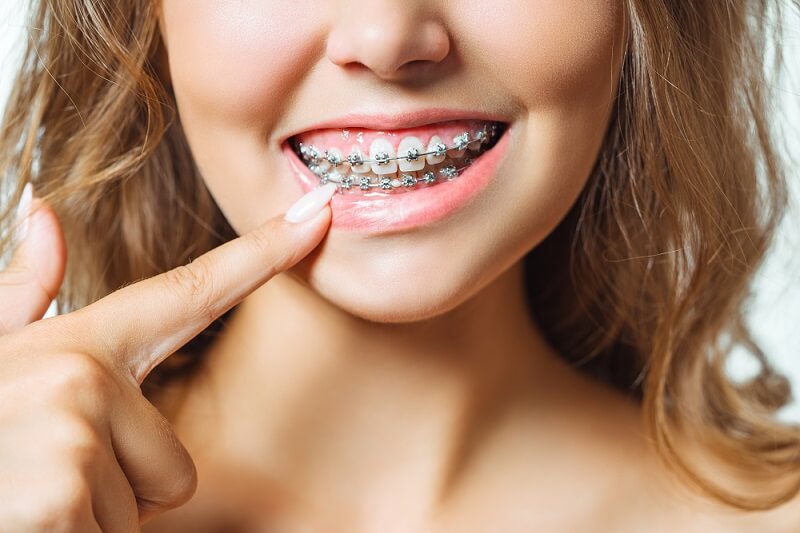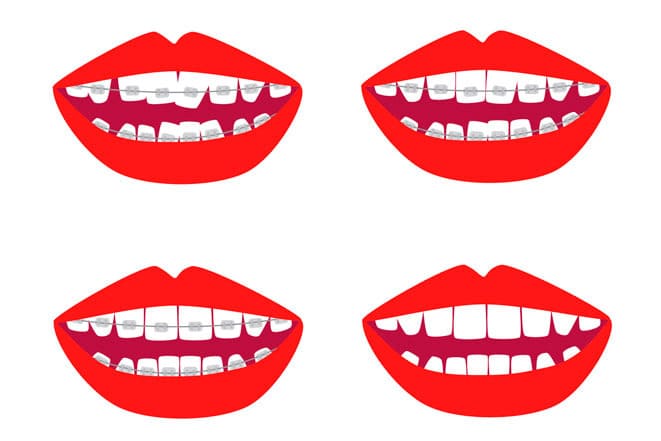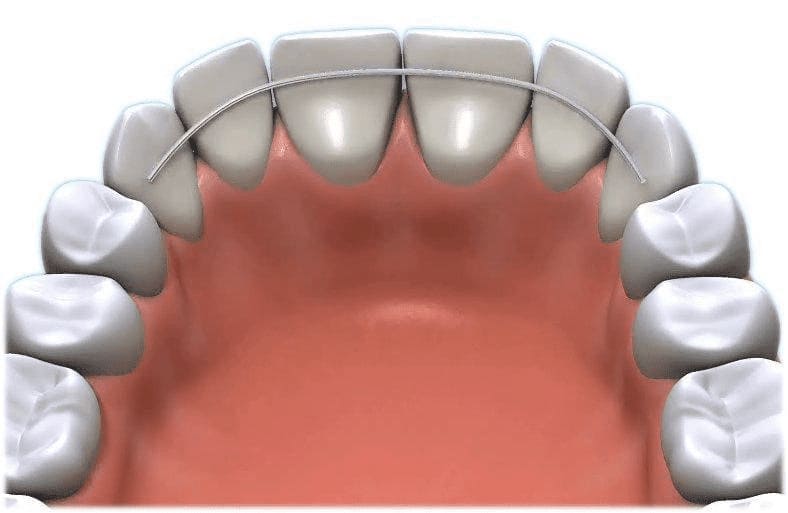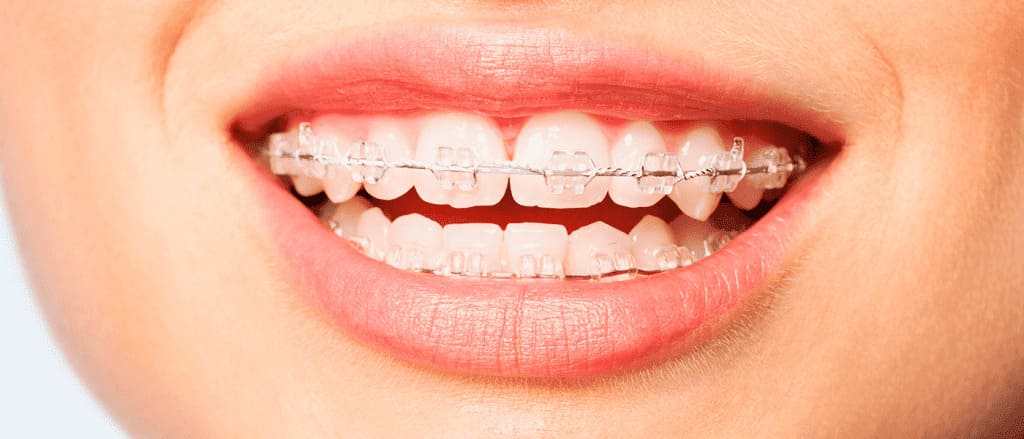Braces Removal Procedure: Frequently Asked Questions

Contents:
Braces can correct various types of bite malocclusion and tooth position the teeth. They are designed to make your teeth straight and your smile beautiful. However, when the moment of removal of braces approaches, many questions arise. In this article, we will try to answer them.

The main stages of removing braces
The procedure takes very little time and is much faster than placement.
First, the dentist prepares the oral cavity. Then, he places a special protective silicone pad (retractor). It protects the tongue and gums during the removal of the elements of the bracket system.
- After that, the doctor opens the locks with a special tool and removes the archwire with braces
- Further, the entire system is carefully removed using tongs. The patient may notice that the teeth are slightly mobile. This is fine; the braces have stretched the ligaments; after a short time, they will shrink, and the teeth will stop moving.
- The next step is to remove the glue from the tooth enamel. This is done using a special polishing tip (burnisher) since the glue is very adhesive.
- The next is the enamel remineralization process (saturation with various mineral components for complete restoration).
- The last step is enamel grinding. Finally, the teeth are restored to their beautiful and healthy appearance.

Removal of braces and retainers placement
How Are Braces Removed?
Braces can only be removed in an orthodontist’s office. Unprofessional attempts can damage soft tissues and teeth.
The doctor carefully removes the locks and other elements of the bracket system with forceps, removes the remaining glue, and reminalizes and polishes the enamel. The patient cannot do this. The procedure takes about 40 minutes.
Many patients ask: does getting braces off hurt? The answer is no; it doesn’t hurt at all. The doctor uses special tools and does everything professionally. Only mild discomfort may be present, but no pain.
Often after removing braces, the enamel becomes weakened and sensitive to cold and hot. Gradually, it recovers, and the discomfort goes away.
What happens after you get your braces off?
Immediately after removing the braces, it is necessary to restore the enamel. To do this, apply special remineralizing gels and fluoride varnishes. They strengthen the teeth.
Sometimes teeth restoration is required: whitening, elimination of carious lesions and chips, or other types of restoration of aesthetic defects.
The doctor, in each case, determines the need for specific procedures individually.
Dentist’s recommendations after removing the braces: proper dental care

Some patients note at the end of treatment that their teeth ache after removing the braces. These sensations are associated with the relaxation of the jaw muscles after a long load and the tendency of the teeth to return to their original place. Installing retainers eliminates pain in the teeth. But the primary purpose of retainers is stability.
This tiny fixing appliance is needed to avoid relapse. They are placed after braces. Retainers help the teeth fix in the correct position, and there is no tendency to return to their former position.
Before placing retainers, it is necessary to allow time to restore tooth enamel. Therefore, the dentist performs a professional cleaning about a week after removing the braces. If necessary, the dental professional treats carious lesions and performs fluoridation.
Dental hygiene after wearing braces should be as meticulous as ever. Use a regular brush and paste. It is recommended to carry out professional hygiene at the dentist. Also, use removable plastic retainers every night for the first six months.
What are the braces replaced with?

It is important to wear retainers after braces for a year or more. Otherwise, the teeth will return to their previous position, and all treatment with braces can come to naught.
Retainers, unlike braces, are small and almost invisible. They do not affect articulation. Retainers do not put pressure on the teeth but simply fix them.
These appliances are of two types:
- permanent – they look like a thin wire, it is placed on the teeth’ internal surface, such a retainer does not cause any discomfort and is absolutely not noticeable to strangers;
- removable – can be in the form of a mouth guard, aligner, trainer or plate; the first option is often used, mainly; such products are worn at night for several hours a day.
The orthodontist determines the time of wearing retainers individually. It depends on:
- age of the patient (teenagers wear less, adults wear longer);
- malocclusion and tooth position;
- bad habits (smokers, who usually have a weakened immune system, will have to wear longer);
- oral health (healthy teeth and tissues are fixed in the correct position faster).
The average amount of time for braces may be different:
- from 6 months to 2 years – for teenagers;
- 5 years and more for adults.
On average, the retention period is twice as long as wearing braces.
Tips for wearing retainers:
- You need to visit your dentist to examine the oral cavity and follow-up care approximately every six months.
- Teeth are cleaned with the usual brush and paste; only special care shall be taken when cleaning from the inside.
- If the retainer is displaced, damaged, or came off, you should definitely go to the dentist to fix the appliance.
- Avoid solid foods and do not chew on anything.
- Removable retainers are brushed with paste, rinsed before each use, stored in a particular container, and cleaned in a unique solution once a week.
- In addition to toothpaste, use an irrigator and dental floss. So you can clean even hard-to-reach places well.
- The oral cavity is rinsed with a fluorine-containing composition to strengthen tooth enamel.
What Are The Stages of Orthodontic Treatment?

- Initial consultation with a specialist
During the consultation, the doctor examines your teeth and listens to complaints and wishes. Next, you will find out what treatment options are available. If necessary, the dentist will suggest an X-ray.
- Precise diagnosis and treatment
Several studies need to be conducted to have accurate data on the condition of the teeth and the structure of the patient’s jaw:
- panoramic X-ray of the upper and lower jaws (orthopantomogram);
- side view of the skull (teleroentgenogram);
- face and profile photo;
- impression of the jaw.
In addition, it is necessary to find out if there are any diseases of the gums and teeth. Before braces placement, these problems need to be addressed.
After all checkups, the terms for the required work are determined.
- Preparation of the oral cavity
This includes all treatment procedures that are prescribed when problems are detected:
- gum treatment;
- cavities treatment;
- in some cases, extraction of teeth or correction of the frenulum of the tongue / upper lip;
- removing teeth plaque and tartar.
- Braces placement
The procedure takes about an hour.
Before installation, the teeth are cleaned and polished.
Then a special gel is applied, designed to fill the microcavities in the enamel.
After that, the teeth are covered with dental glue, and locks and an arc are attached.
In the end, you need to activate the braces. This is done by changing the pressure on your teeth. Then, at regular intervals, various elements of the structure are replaced.
- Treatment
It lasts approximately two years. Then, gradually, with the help of braces, the teeth are aligned, the bite is corrected, and tight contacts are established between the upper and lower dentition.
- Retention period
Final stage. After braces, retainers are placed to consolidate the effect.
As you can see, orthodontic treatment takes a long time, but the result is worth it. Straight teeth and a beautiful smile will make your life happy.
What is tooth restoration after braces removal?

This question is asked quite often, so we decided to answer it in more detail.
Sometimes after the braces removal, the teeth need artistic restoration. Chips, irregularly shaped teeth, and pathologically worn teeth are the case.
The dentist decides whether restoration is required after braces and what methods should be applied. Then, the patient chooses the most suitable options.
Conclusion
Removing braces is a quick and painless procedure. However, only a doctor can only perform it.
After wearing braces, it is necessary to place retainers to consolidate the effect of treatment. Next, the doctor will select the type of appliance suitable for your case.
If you want a beautiful smile, follow the advice of professional orthodontists.

